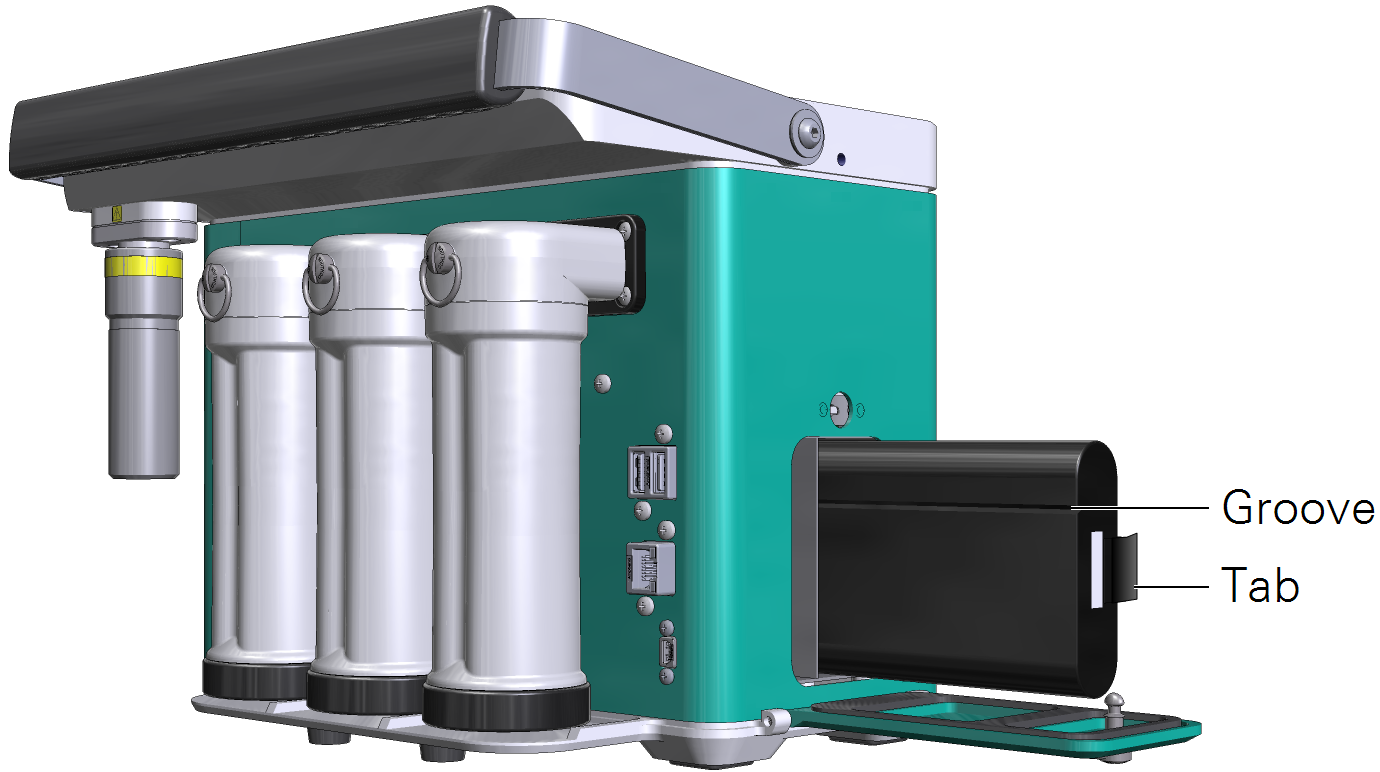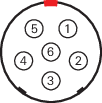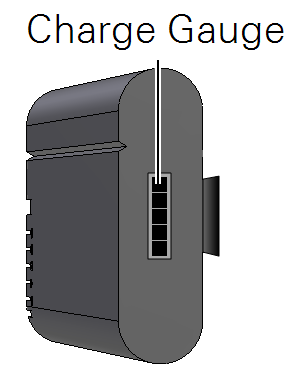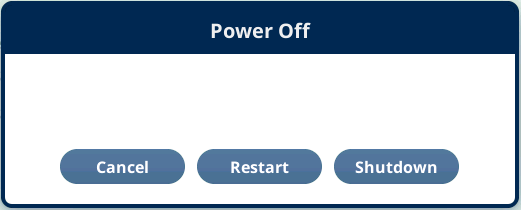The LI-6800 can be powered from the included batteries, from the power adapter, or from a user-supplied power source.
Power adapter
The AC power supply is compatible with 100‑240 VAC power sources of either 50 or 60 Hz. The LI-6800 can be powered from the adapter. The adapter also charges the batteries that are installed in the instrument. Use the safety-approved power cord supplied with the instrument.
Batteries
Three batteries (part number 442-11807) are provided with the instrument. Two batteries can be installed behind the battery cover, but only one battery needs to be installed to power the device. when not powered from the adapter. We recommend having one battery installed even when using the AC power adapter to avoid having your measurement come to an abrupt halt if the AC power is lost.

The batteries are 14.4 V lithium ion battery packs with 6.8 amp-hour capacity. Two batteries should provide up to 12 hours of operation, depending upon the configuration. Batteries will be drawn down quickly when you run the light source at high intensities and control temperature far from ambient. Keep this in mind when you plan your field work.
Charging batteries in the console
When batteries (one or two) are installed in the console, they will charge any time the LI-6800 is powered with the adapter. The LI-6800 supports hot-swapping, meaning that you can take one battery out and replace it with a freshly charged battery and measurements will not be interrupted—so long as there is a charged battery installed in the instrument.
The console displays the remaining charge, either as a percent of time. The batteries also have a Charge Gauge indicator, which shows the charge level of the battery.
Charging batteries with the external charger
The single-bay charger (part number 590-11830; Inspired Energy CH7000A) can charge one battery at a time. To use the charger, plug it into a wall socket and place a battery in the dock. The charger is compatible with 100 to 240 VAC power at 50 to 60 Hz. When charging, you'll see a blinking LED. When fully charged, you'll see a solid green LED.
Note: You can use the automobile adapter kit to charge the battery from an automobile. Leave the vehicle running when charging the LI-6800 battery to prevent excessive discharge of the car battery.
Warning: Charge batteries only with a SMBUS compliant level 2 or 3 charger. Do not heat above 80 °C. Do not open battery, dispose of in fire, or short circuit—may ignite, explode, leak, or get hot, causing personal injury. Replace battery with same part number only. Use of another battery may present a risk of fire or explosion. Keep away from children.
External power source
You can power the LI-6800 with any 12 to 18 VDC power source. A deep-cycle marine battery with at least a 20 amp-hour capacity will work fine. The power cable adapter (part number 9968-242) terminates with red and black cables. Connect the red cable to the positive terminal and black to the negative terminal of a battery or another power supply.
| Connector | Pins | Description |
|---|---|---|

|
1 and 5 |
 24 VDC, 8.4 A; LI-COR power source 24 VDC, 8.4 A; LI-COR power source |
| 3 and 4 |
 12-18 VDC, 14.3 A; custom power source 12-18 VDC, 14.3 A; custom power source |
|
| 2 and 6 | Ground |
Powering on and off
To turn on the LI-6800 briefly press the power button. To turn it off, press and release the power button, or go to Start Up > Standby/Power Off > Power Off.
With version 1.5, the power button on the side of the console has additional functions: A double press (two presses within ½ second) will restart the interface program while leaving the underlying Python scripts unaffected. Conditions where you may want to do this are if the touch screen response is very slow, or ceases altogether; the Stability screen is "whited out" with no available buttons, or other unexpected behavior of the interface. The button does the following:
- Single tap brings up the Power Off options, offering a choice of Cancel, Restart, or Shutdown.
- Double tap restarts the user interface without affecting underlying scripts (data logging, auto programs, programs, etc.).
- Sustained press (5 seconds) for a forced power down. In this situation, the Excel® file will not be written.
If you are logging to an Excel file, the LI-6800 writes the Excel file after you close the log file. The LI-6800 will warn you that it is writing the Excel file and wait to shut down until the file is written. If you press Restart or Shutdown anyway, the Excel file will likely be corrupted, so it is best to wait until the file is written.
Putting it away for the season? See Storing the LI-6800.


